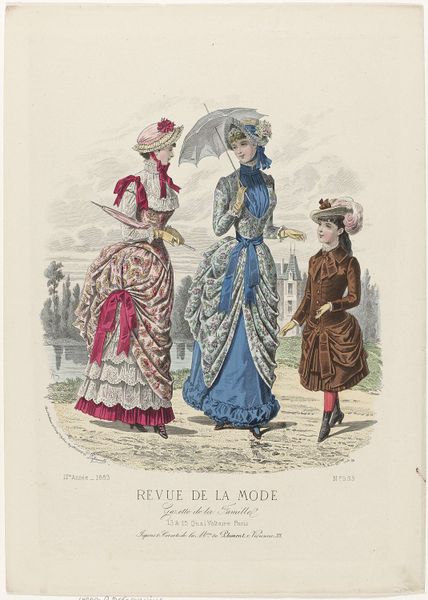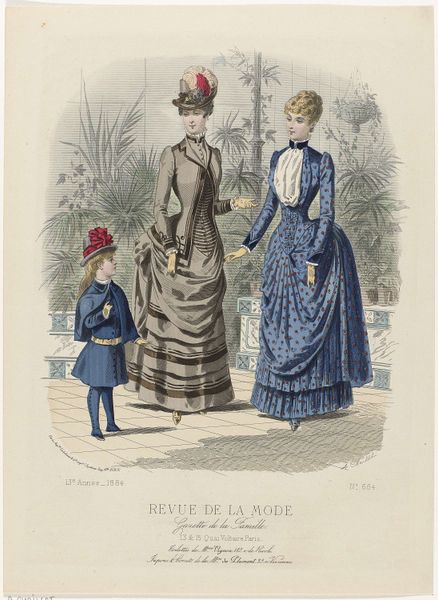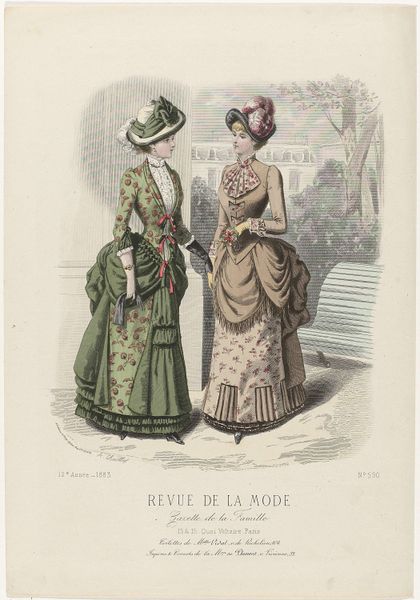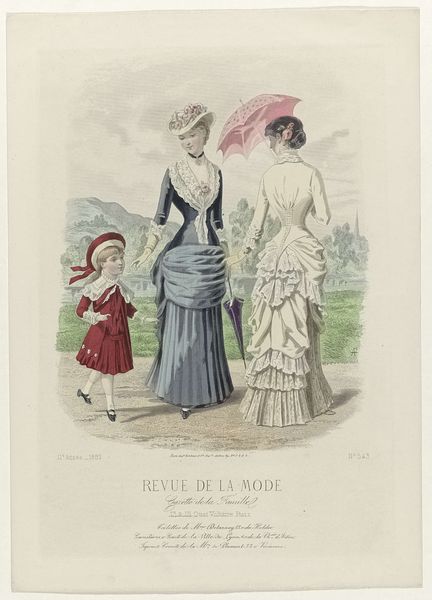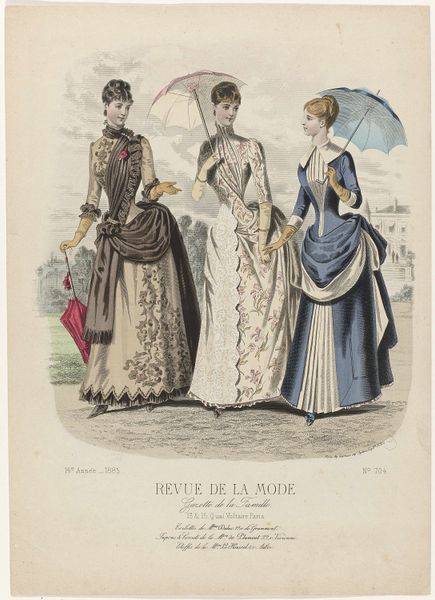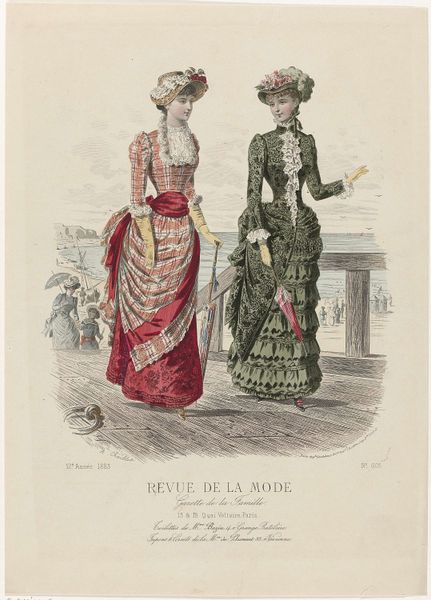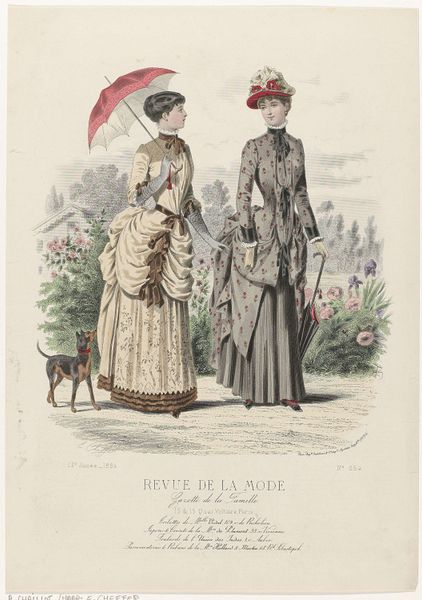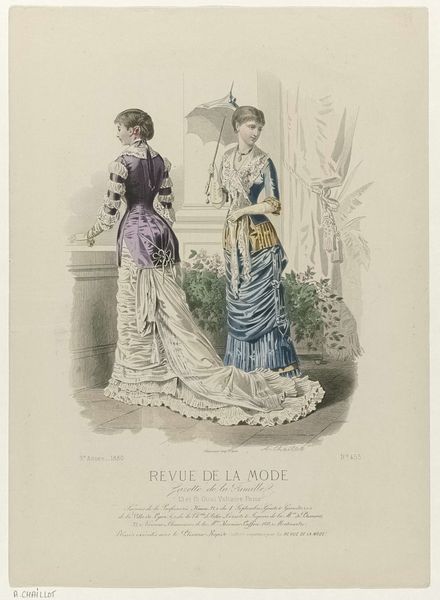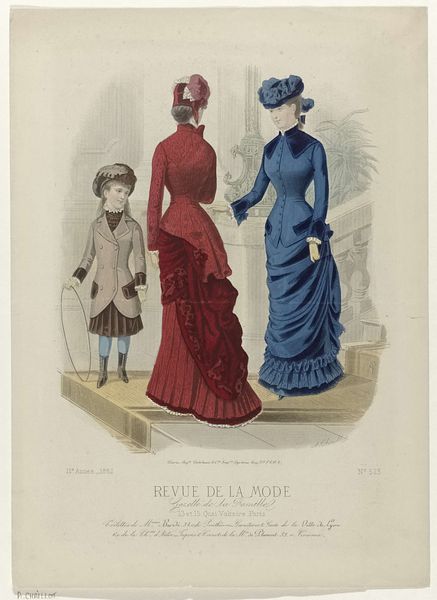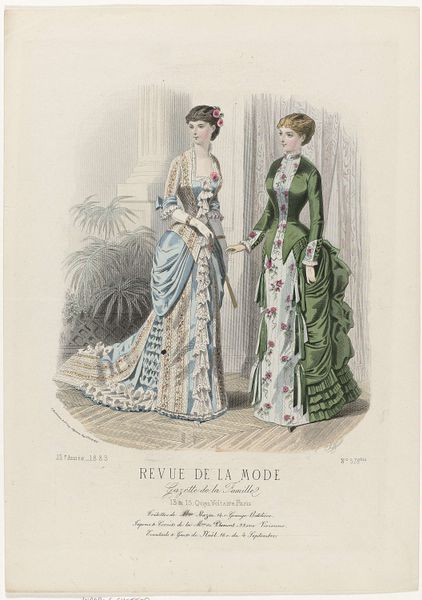
Revue de la Mode, Gazette de la Famille, dimanche 1 juillet 1883,12e annee, No. 600: Toilettes de Mme Day-Falett (...) 1883
0:00
0:00
drawing, graphic-art, print, watercolor
#
drawing
#
graphic-art
# print
#
impressionism
#
watercolor
#
historical fashion
#
watercolour illustration
Dimensions: height 375 mm, width 268 mm
Copyright: Rijks Museum: Open Domain
This print from July 1883 presents an array of fashionable dresses, each a testament to the era's aesthetic. Observe how the dresses employ the motif of the bow, a symbol extending far beyond mere decoration. The bow, in its essence, is a knot—a binding. In ancient times, knots were imbued with magical properties, thought to secure intentions or protect against harm. Consider the wedding knot, a tradition still practiced today, symbolizing the binding of two lives. Here, the bows at the waist serve not only to cinch the figure but also to symbolically 'tie' the wearer to ideals of femininity and social grace. Yet, the bow's meaning has evolved. From a symbol of binding, it has also come to represent adornment and display. Think of the Renaissance, where elaborate knots and ribbons signaled status and refinement. These bows, while seemingly frivolous, engage viewers on a subconscious level, evoking collective memories of binding, protection, and societal roles. Through the centuries, the bow has resurfaced, evolving from a potent symbol of magical binding to a delicate emblem of fashion, ever retaining its echo of deeper, primal connections.
Comments
No comments
Be the first to comment and join the conversation on the ultimate creative platform.
